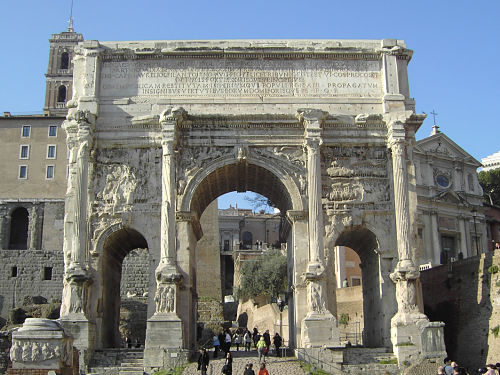Roman Architecture – Definition, History and Types
Contents
What is Roman Architecture?
When talking about the different types of architecture there are architectural styles that are more outstanding than others, such as baroque architecture, gothic architecture or even Roman architecture. Obviously architecture is a very prominent discipline within all the types of art that existed in the history of art.
Definition of Roman architecture
As mentioned above, Romanesque architecture is a discipline that emerged within Romanesque art. Both this type of art and its architecture emerged in Rome and evidently it was one of the most important styles, both artistic and architectural, for the Roman population.
Roman architecture has different characteristics among which we highlight a solidity and a grandiose aspect of its constructions and thanks to this, today we can still enjoy different buildings built by this architecture.

History of Roman architecture
The history of this style of art was born in the Etruscan, with various influences of Greek art that could be seen more clearly after the Punic war, it is for this reason that Roman architecture has various influences of Greek and Roman art.
Within this architecture not only domes and barrel vaults were built, but also ribbed vaults and groin vaults. However, the latter were not used very often since only two outstanding examples can be observed, namely the Baths of Caracalla and the Basilica of Maxentius.
When talking about the constructions that were made, there were different characteristics depending on the use given to these buildings. Depending on the use, they could be either very sumptuous or very sober. However, something very representative of this architecture was that the aqueducts and bridges were merely functional, but the palaces and temples had a luxurious aspect. The most used material was stone and the walls that were built soon after were decorated with mosaics and paintings.
Orders of this style of architecture
In this style of architecture several Greek orders can be observed to which it was adapted and in addition several more orders of Roman art were included. These orders are:
Roman Doric order
Moving the columns to sixteen different modules.
Roman Ionic order
A decoration is observed in the capital and the reduction of the volutes.
Roman Corinthian order
The sheet of acato was its main difference to the others.
Composite order
This order did not have great influences from the Corinthian order, moreover in this order an accidental change and a great amount of decorations could be observed.
Types of constructions
Within the Roman architecture there were different types of constructions that little by little were adapted to the tastes that the Romans had as well as to the needs of this. It is for this reason that we can observe diverse constructions among which we can emphasize:
Basilicas
The basilicas were known as palaces of justice. They had a rectangular base with naves on the sides and in the center, the entrances were usually placed on the sides and had galleries and tribunes.
Triumphal arches
Triumphal arches were usually intended to embellish and honor glorious victors. These constructions were elevated with obelisks and columns.
Amphitheaters
The amphitheaters were characteristic constructions of the Romans and whose base had an elliptical or circular shape.
Baths
Thermae were small public baths or baths.
Naumachias
The naumachias were similar to the amphitheaters but the bottom was filled with water to reflect the water.
Temples
One of the most represented constructions of all were the temples. These temples had a similar form to the Greek temples but differed from this by the reduced columns that were on the outside and were replaced by pilasters.
